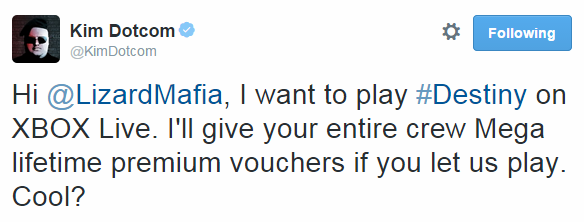
Christmas caters to small children. The endless mythology around Santa and the endless fights over popular toys all center on bringing Christmas cheer to another generation of tiny humans who have yet to realize that everything is a lie.
One of the most popular lies to tell children in recent years has been the myth of the Elf on the Shelf. Here's everything you need to know.
It began with a children's book
The Elf on the Shelf: A Christmas Tradition is a children's book, written by Carol Aebersold and her daughter Chanda Bell. Self-published in 2005, the rhyming book tells the story of a group of Santa's elves who hide out in houses around the country to watch children and decide if they are naughty or nice. The book quickly became an extension of the Santa Claus Christmas fable. In 2008, it also won the Book of the Year prize from Creative Child Awards.
In 2008, the rise of the elf began. The Elf on the Shelf joined Facebook, and Aebersold and Bell, the authors, went on a book tour. The elf character began picking up momentum, and by 2012, he was a float in the Macy's Thanksgiving Day Parade. The Elf on the Shelf has been a best-seller every year since 2013.
The book says that at night, the elf flies back to the North Pole to tell Santa how children are behaving, before returning to their homes to hide. Thus, the elf plays a game of hide-and-seek with children, who look for their elf in a different spot in their house each day.
The book only sets up one rule that children must follow so that the elf can do its job: "Please do not touch me. My magic might go, and Santa won't hear all I've seen or I know."
After Christmas is over, the elf flies back to the North Pole, presumably to spend time with Santa until Thanksgiving the next year. Nobody ever seems to talk about why the most efficient delivery system for this Santa surveillance racket is sold in major department stores, or why the elves just started showing up in 2005, but there you go.
The elf in the Macy's Thanksgiving Day Parade. (Brad Barket/Getty)
With the book comes a toy — and encouragement of parental deceit
When parents purchase the book for their children, it comes with a small plush elf that they are invited to use to reenact the events of the book. It's an opportunity for parents to put their lying skills to the test, to see if they can convince their kids this elf is real, lives in their home, and communicates with Santa. In 2007, Jennifer Garner was photographed carrying an Elf on the Shelf box; shortly after, the Today show aired a segment about the toy and sales began to skyrocket.
You can buy the elf with "brown skin tone" or "light skin tone" and as a boy or a girl.
You can "personalize" your elf
You can name your elf whatever you want. As the book explains, being named is what allows elves to become powered by Christmas magic and fly back and forth to the North Pole. The book encourages families to create a tiny birth certificate for the elf with its name and the date of its "adoption."
Having trouble thinking of a name? Want to teach your children about peer pressure, social media, and conformity? These are some popular names for elves, according to Pinterest:
A list of suggested elf names. (Pinterest)
The toy can breed competition (and potentially feelings of inadequacy)
Because the elf is supposed to be "alive" and watching children to see if they're naughty or nice, this toy basically requires parents to move it to a new location every night. There are entire Pinterest boards of ideas for how to creatively place your elf in your house to delight your children (and make your Instagram followers envious).
The elf in the silverware drawer. (Pinterest)
The elf makes a grocery list. (Pinterest)
This can cause added holiday stress for a parent with young children. And on top of the actual work of remembering to move the elf around, there can be pressure in certain social circles to make your elf do the most interesting, creative, and performative things, so that you can shame and humiliate the elves of your children's friends.
The pressure has even led some parents to adopt drastic measures like saddling their elf with a serious case of the flu or a broken leg just to get some relief from the nightly elfin repositioning — not exactly the stuff warm holiday memories are made of.
"Is it any wonder that this kind of holiday madness, which dovetails with every strain of guilt mothers feel over their domestic imperfections, coupled with the catch-22 that if you do your job right, your children will never thank you for it (because all these goodies come from the Elf!), sometimes leads to a backlash?" Kate Tuttle wrote for the Atlantic in 2012.
The parenting benefits are iffy
As a parenting tool, the Elf on the Shelf is similarly controversial. The story makes clear that Santa is busy at the North Pole and unable to watch every child in the whole world, so the elf has been sent to do his dirty work for him. The elf serves as a tangible reminder that children are supposed to be "nice," not "naughty," and some parents use the elf as a way to discipline their children by reminding them that the "elf is always watching."
Yet this tactic comes with its own set of issues. As Petula Dvorak wrote for the Washington Post in 2012:
It's a Faustian deal. First, you get this amazing disciplinary tool. My little heathens instantly turned into angels the moment I said, "The Elf is watching." Not like the abstract "Santa is watching."This was a real, actual thing, staring down at them with dead eyes, perched on the curtain rod, then the bookshelf, then swinging from the chandelier. I was beginning to fear withdrawal come January.
Theoretically, teaching your children to be "nice" in order to satisfy an imaginary elf may not help them determine right from wrong but rather teach them to perform based on the promise of rewards. (One supposes parents could just keep the elf game going year-round, but that sounds exhausting and seems like it has the potential to backfire once your children realize their moral center was founded upon a toy.)
The elf is a symbol of the surveillance state disguised as a children's toy
"I watch and report on all that you do!" the elf warns in The Elf on the Shelf, adding that "the word will get out if you broke a rule." This sounds pretty familiar!
"Having been molded by this age of NSA overreach, [Edward] Snowden, Wikileaks and Anonymous, what bothers me most is that inviting Elf on the Shelf into the home unnecessarily extends surveillance culture into a place that should be free of it," Alex Steed wrote in a column for the Bangor Daily News in 2014. "Santa Claus is a myth that at best represents generosity at its finest. But with the elf, we choose to emphasize his surveillance. That is really weird."
Some find the very rules of the elf "game" disturbing. As digital technology professor Laura Pinto and co-author Selena Nemorin wrote in a paper published by the Canadian Center for Policy Alternatives:
[T]he hands-off "play" demanded by the elf is limited to finding (but not touching!) The Elf on the Shelf every morning, and acquiescing to surveillance during waking hours under the elf's watchful eye. The Elf on the Shelf controls all parameters of play, who can do and touch what, and ultimately attempts to dictate the child's behavior outside of time used for play.
The toy, they write, "blurs the line between play time and real life" by dint of the elf's never-ending surveillance (at least during the Christmas season).
As Colleen Leahy writes for Fortune, "The Elf on the Shelf embodies, He sees you when you're sleeping/He knows when you're awake — lines disturbing to the cynical adult or Santa-fearing child." And even more than the Christmas song, the toy raises a thorny issue: What does it teach children when you allow them to believe they are being watched at all times and that this is ultimately for their benefit? At least to Pinto and Nemorin, it means we're setting them up for "dangerous, uncritical acceptance of power structures."
Plus, the elf brings up questions about security within private homes that can even scare some children. "Why inject a note of fear and suspicion into a season and a holiday that are meant to be about love, togetherness, and forgiveness?" Tuttle wrote.
This year has been hard enough. Now more than ever, we need the freedom to enjoy the holidays without the specter of big-government surveillance in our homes — no matter how whimsically packaged.
Tanya Pai contributed to this story.
Watch: How pop culture turned into popular belief

/cdn0.vox-cdn.com/uploads/chorus_asset/file/2897090/2011_chw_2050_01.0.gif)








 Truth be told, this nerd Super Bowl is a huge, huge show — the world’s largest of its kind. The 3,500 exhibitors span more than two million square feet in Las Vegas and includes enough gadgetry to fill 35 football fields. The Consumer Electronics Association, which puts on the show, said it expects between 150,000 and 160,000 industry professionals to attend CES this year, on par with last year’s show.
Truth be told, this nerd Super Bowl is a huge, huge show — the world’s largest of its kind. The 3,500 exhibitors span more than two million square feet in Las Vegas and includes enough gadgetry to fill 35 football fields. The Consumer Electronics Association, which puts on the show, said it expects between 150,000 and 160,000 industry professionals to attend CES this year, on par with last year’s show.


 The way things are panning out, the Sony movie The Interview is on course to become one of the most controversial movies of all time.
The way things are panning out, the Sony movie The Interview is on course to become one of the most controversial movies of all time.






/cdn0.vox-cdn.com/uploads/chorus_asset/file/2535104/Screen_Shot_2014-12-09_at_10.09.33_PM.0.png)
/cdn0.vox-cdn.com/uploads/chorus_asset/file/2539958/Screen_Shot_2014-12-11_at_8.35.02_AM.0.png)
/cdn0.vox-cdn.com/uploads/chorus_asset/file/2451656/109913268.0.jpg)
/cdn0.vox-cdn.com/assets/4725220/151259260.jpg)

/cdn0.vox-cdn.com/uploads/chorus_asset/file/2532912/shutterstock_220538575.0.jpg)
/cdn0.vox-cdn.com/uploads/chorus_asset/file/2540700/173301813.0.jpg)
